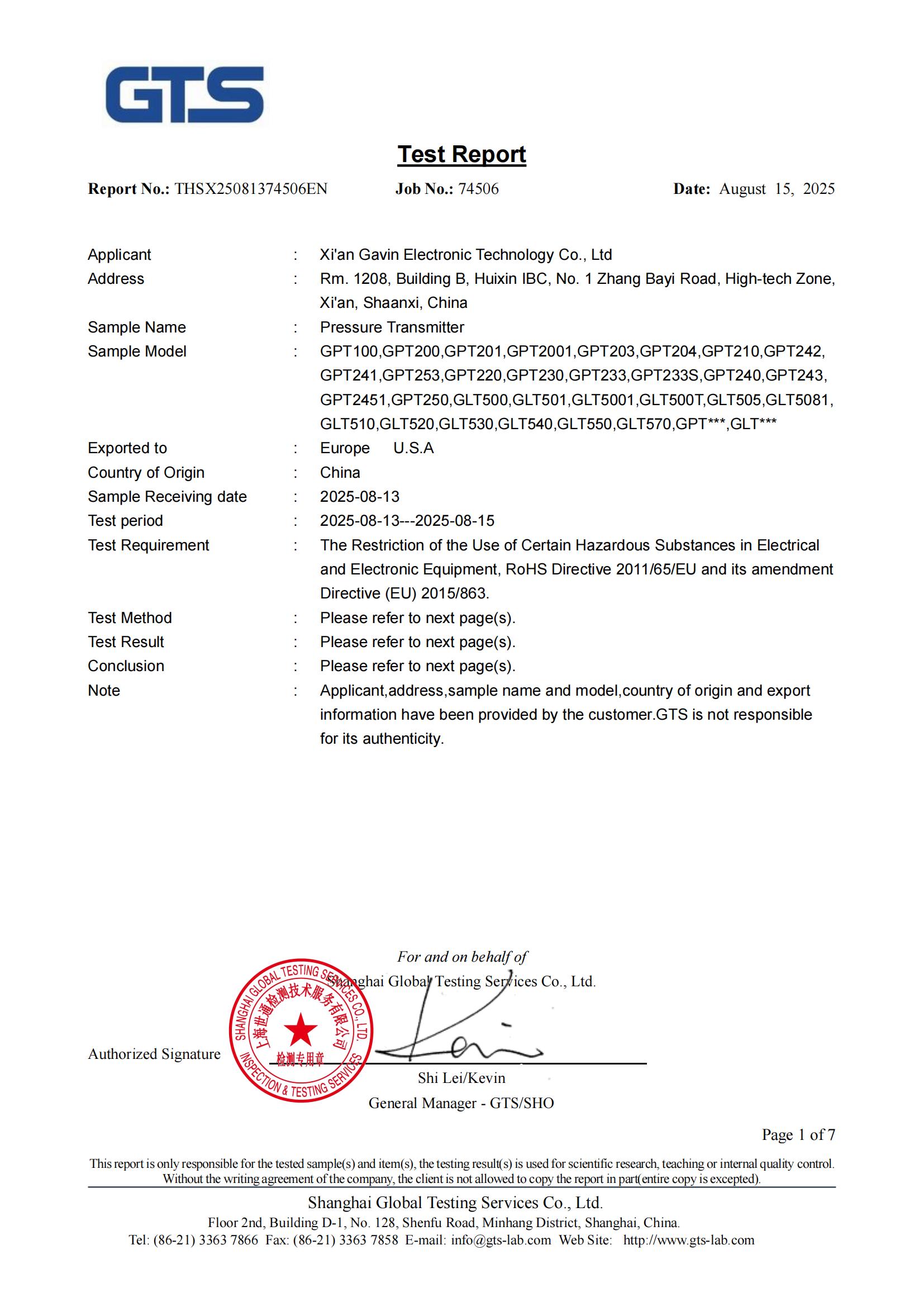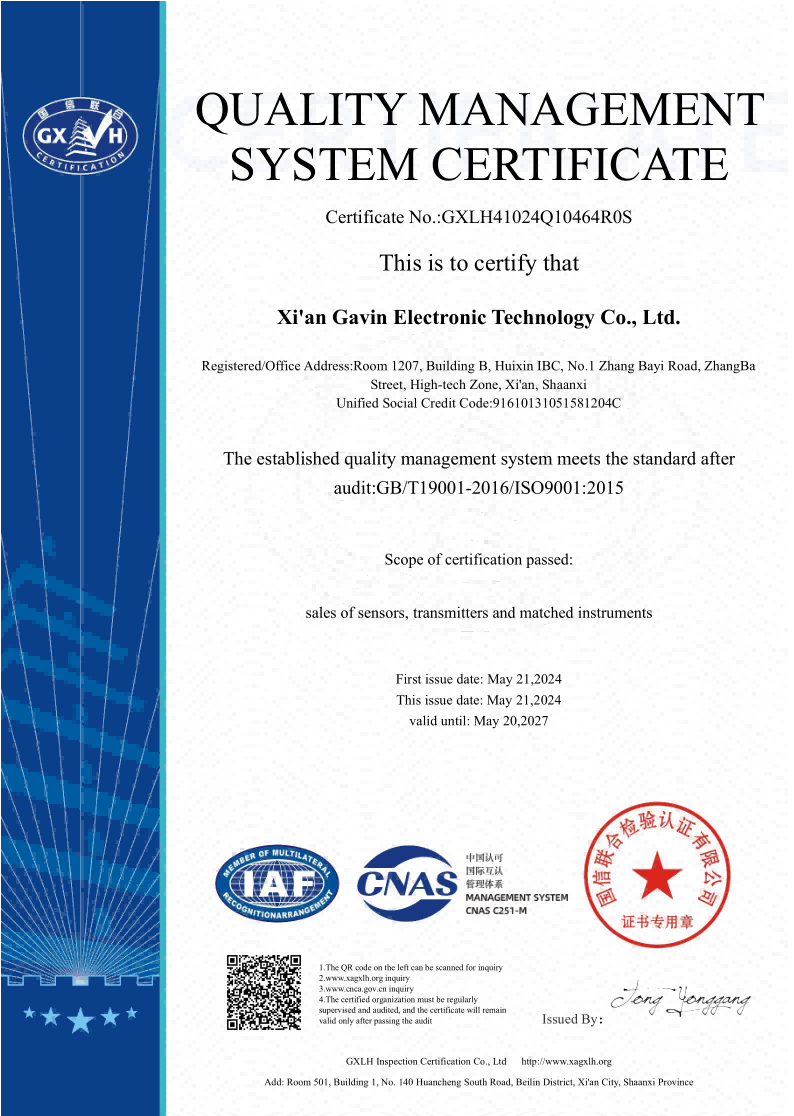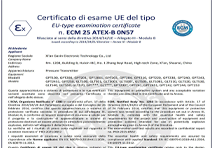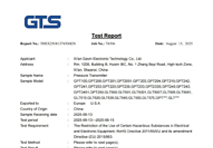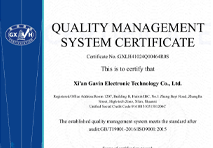What causes the sensor output signal to be inaccurate?
How Temperature Affects Ceramic Pressure Sensor Output?
Accurate sensor output signals are crucial for precise measurements in various industries. At GAMICOS, we specialize in developing and manufacturing high-quality ceramic pressure sensors and other measurement solutions. Our expertise spans across multiple sectors, including chemical processing, oil and gas, food and beverage, and water treatment. We understand the critical nature of sensor accuracy and offer customized solutions to address specific industry challenges.
How Temperature Affects Ceramic Pressure Sensor Output?
Temperature fluctuations can significantly impact the accuracy of ceramic pressure sensor output signals. These sensors rely on the principle of piezoresistivity, where electrical resistance changes in response to applied pressure. However, temperature variations can alter this relationship, leading to inaccurate readings.
Thermal Expansion and Contraction
Ceramic pressure sensors are sensitive to thermal expansion and contraction. When temperatures fluctuate, the ceramic material expands or contracts, which can slightly change the sensor’s geometry and influence its pressure readings. Such variations may cause measurement inaccuracies, particularly in environments with frequent or rapid temperature shifts, as the sensor struggles to maintain calibration and stability under these thermal stresses.
Temperature Coefficient of Resistance
The temperature coefficient of resistance (TCR) significantly affects the accuracy of ceramic pressure sensors. As temperature changes, the electrical resistance of the sensor’s internal components may vary, causing fluctuations in the output signal. These variations can introduce measurement errors if not properly managed. To address this, high-quality ceramic pressure sensors are designed with advanced temperature compensation mechanisms that help maintain consistent performance and accuracy across a wide range of operating temperatures.
Thermal Hysteresis
Thermal hysteresis arises when a sensor’s output varies depending on whether the temperature is rising or falling. This behavior can cause inaccuracies in ceramic pressure sensor readings, especially in systems exposed to repeated heating and cooling cycles. To reduce these errors, manufacturers must employ precise design strategies, material selection, and calibration techniques that minimize the impact of thermal hysteresis and ensure stable, reliable performance across fluctuating temperature conditions.
Impact of Vibration on Sensor Signal Accuracy
Vibration is a common challenge in many industrial environments and can significantly affect the accuracy of ceramic pressure sensor output signals. Understanding and mitigating vibration-related issues is crucial for maintaining measurement precision.
Resonance Frequency Interference
Ceramic pressure sensors possess natural resonance frequencies. When subjected to vibrations near or matching these frequencies, the sensor can generate inaccurate or unstable output signals. To prevent such errors, it is crucial to evaluate the operating environment and choose sensors with suitable resonance properties. Proper selection ensures reliable performance and minimizes the impact of mechanical vibrations on measurement accuracy and sensor stability.
Mechanical Stress on Sensor Components
Extended exposure to vibration can impose mechanical stress on the components of a ceramic pressure sensor. Over time, this stress may cause material fatigue, the formation of microcracks, or gradual deterioration of the sensor’s structural integrity. Such damage can compromise the sensor’s performance and accuracy, leading to signal drift or unreliable output readings. Therefore, vibration-resistant designs and proper mounting are essential to maintain long-term stability and measurement reliability.
Signal Noise Induced by Vibration
Vibrations can introduce noise into the ceramic pressure sensor's output signal. This noise may manifest as high-frequency fluctuations or spikes in the measurement data, making it challenging to discern the true pressure readings. Implementing appropriate filtering techniques and signal conditioning can help mitigate vibration-induced noise.
Material and Manufacturing Factors in Sensor Errors
The materials used in ceramic pressure sensors and the manufacturing processes employed play crucial roles in determining the accuracy and reliability of the output signals. Understanding these factors is essential for producing high-quality sensors and troubleshooting potential issues.
Ceramic Material Composition
The composition of the ceramic material used in pressure sensors significantly influences their performance. Impurities or inconsistencies in the ceramic formulation can lead to variations in electrical properties and mechanical behavior. This can result in sensor-to-sensor discrepancies and affect the overall accuracy of ceramic pressure sensor measurements.
Manufacturing Tolerances and Precision
The precision of the manufacturing process directly impacts ceramic pressure sensor accuracy. Tight tolerances are necessary for consistent sensor performance. Variations in dimensions, surface finish, or electrode placement can lead to deviations in sensor characteristics. Advanced manufacturing techniques and rigorous quality control measures are essential to minimize these potential sources of error.
Packaging and Assembly Considerations
The packaging and assembly of ceramic pressure sensors can introduce additional sources of inaccuracy. Factors such as adhesive properties, thermal expansion mismatches between components, and mechanical stresses during assembly can affect sensor performance. Careful design and selection of packaging materials, as well as optimized assembly processes, are crucial for maintaining sensor accuracy.
Conclusion
Ensuring accurate output signals from ceramic pressure sensors requires a comprehensive understanding of various factors that can influence their performance. From temperature effects and vibration challenges to material composition and manufacturing considerations, each aspect plays a crucial role in determining sensor accuracy. By addressing these potential sources of error, manufacturers and users can optimize ceramic pressure sensor performance and achieve reliable measurements across diverse applications.
GAMICOS: Your Trusted Partner for Accurate Pressure Measurement Solutions
At GAMICOS, we specialize in developing and manufacturing high-precision ceramic pressure sensors and transmitters. Our GPT235 Highly Corrosion-Resistant Pressure Transmitter exemplifies our commitment to accuracy and reliability in challenging environments. Featuring imported ceramic cores, corrosion-resistant housing materials like PTFE or PVDF, and advanced signal conditioning circuits, our sensors deliver exceptional performance even in the most demanding applications.
With our extensive industry experience and dedication to innovation, we provide customized solutions tailored to your specific needs. For expert assistance in selecting the right pressure measurement solution for your application, contact our team at info@gamicos.com.
References
1. Johnson, A. R., & Smith, B. T. (2020). Temperature Effects on Ceramic Pressure Sensor Performance. Journal of Sensor Technology, 15(3), 178-195.
2. Zhang, L., & Wang, Y. (2019). Vibration-Induced Errors in Pressure Sensors: Mechanisms and Mitigation Strategies. IEEE Sensors Journal, 19(8), 2987-2998.
3. Miller, C. D., & Brown, E. F. (2021). Advanced Materials and Manufacturing Techniques for High-Precision Ceramic Pressure Sensors. Sensors and Actuators A: Physical, 317, 112442.
4. Thompson, R. J., & Davis, K. L. (2018). Comprehensive Analysis of Error Sources in Industrial Pressure Measurement Systems. ISA Transactions, 76, 123-137.
5. Anderson, P. M., & Lee, S. H. (2022). Next-Generation Ceramic Pressure Sensors: Overcoming Accuracy Challenges in Extreme Environments. Advanced Materials Technologies, 7(2), 2100254.

Peter
Peter, Senior Sensor Technology Consultant, has 15-year industrial sensor R&D experience. He specializes in the end-to-end development of high-accuracy pressure and level sensors and he firmly believe, precision isn’t just a spec—it’s a promise.
We're here to help — submit your request anytime!
Let us know how we can help solve your pressure level measurement challenge.
Recommended Blog
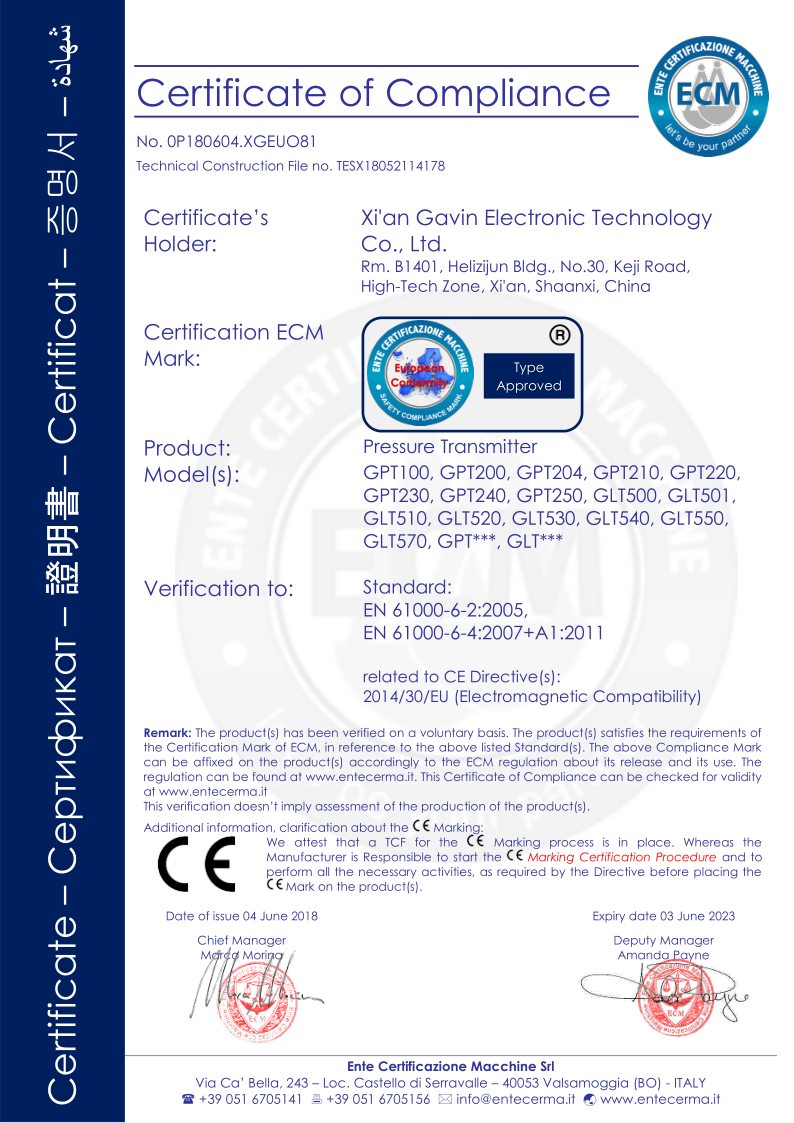
_1757930850792.jpg)
